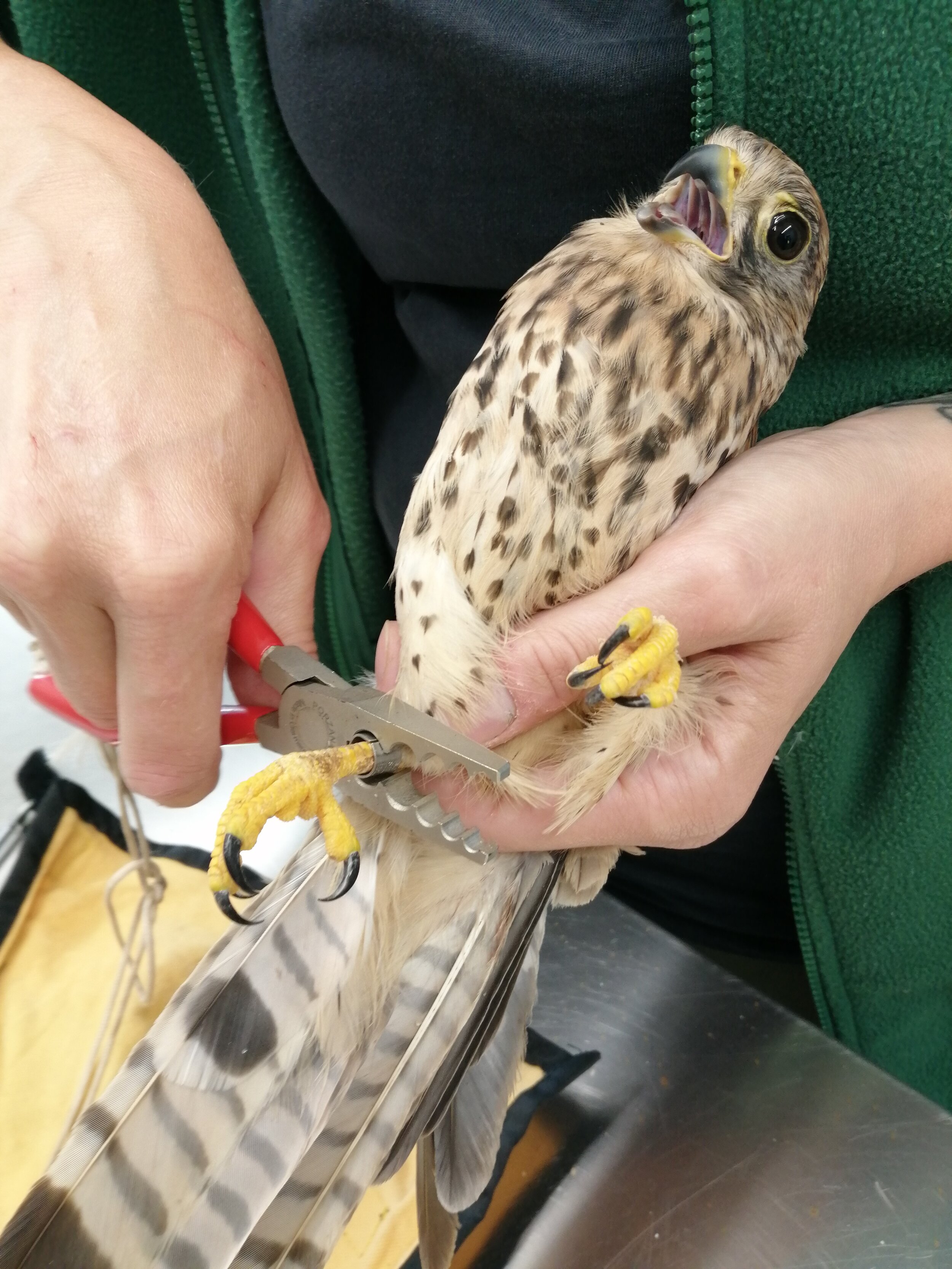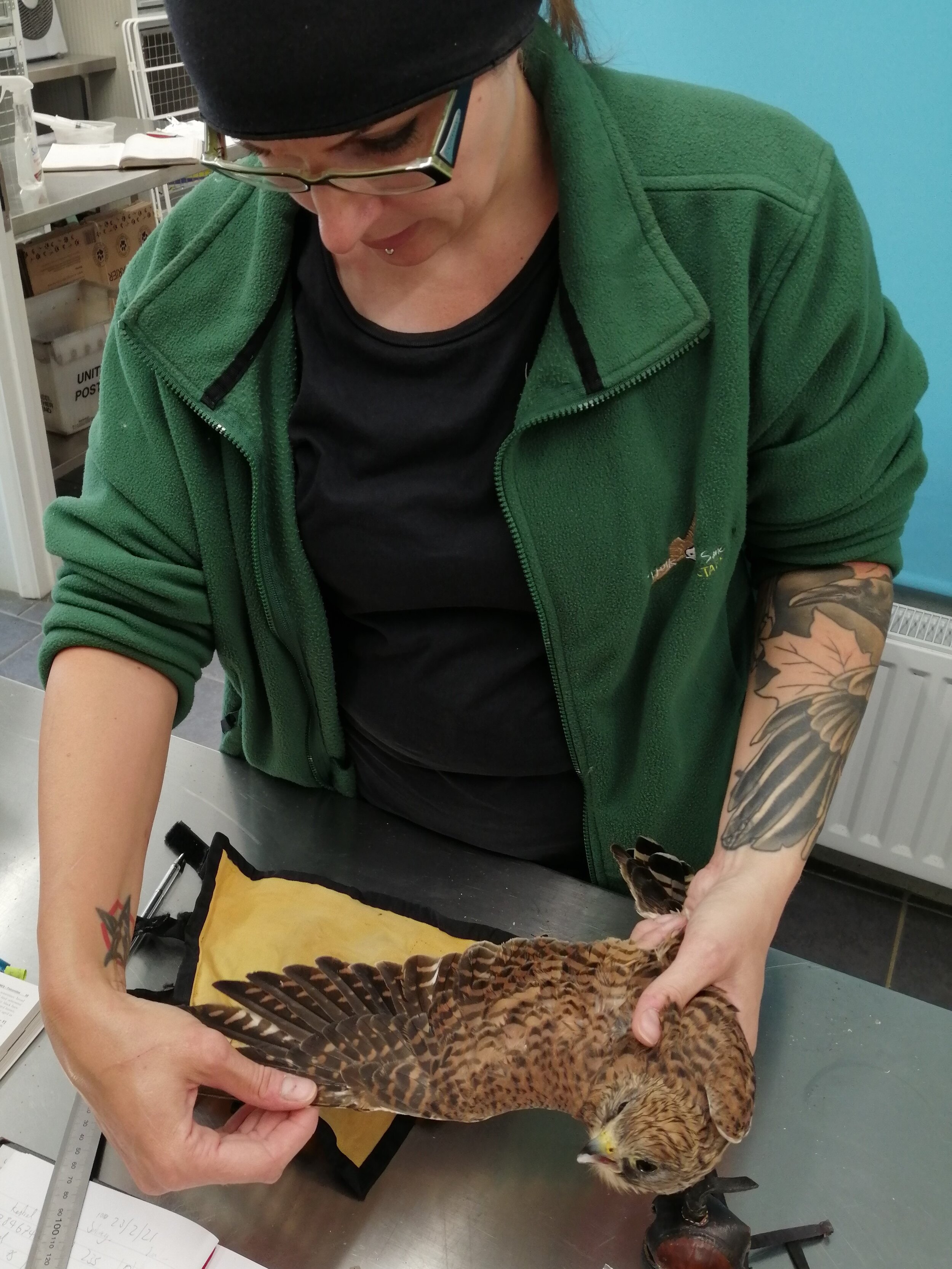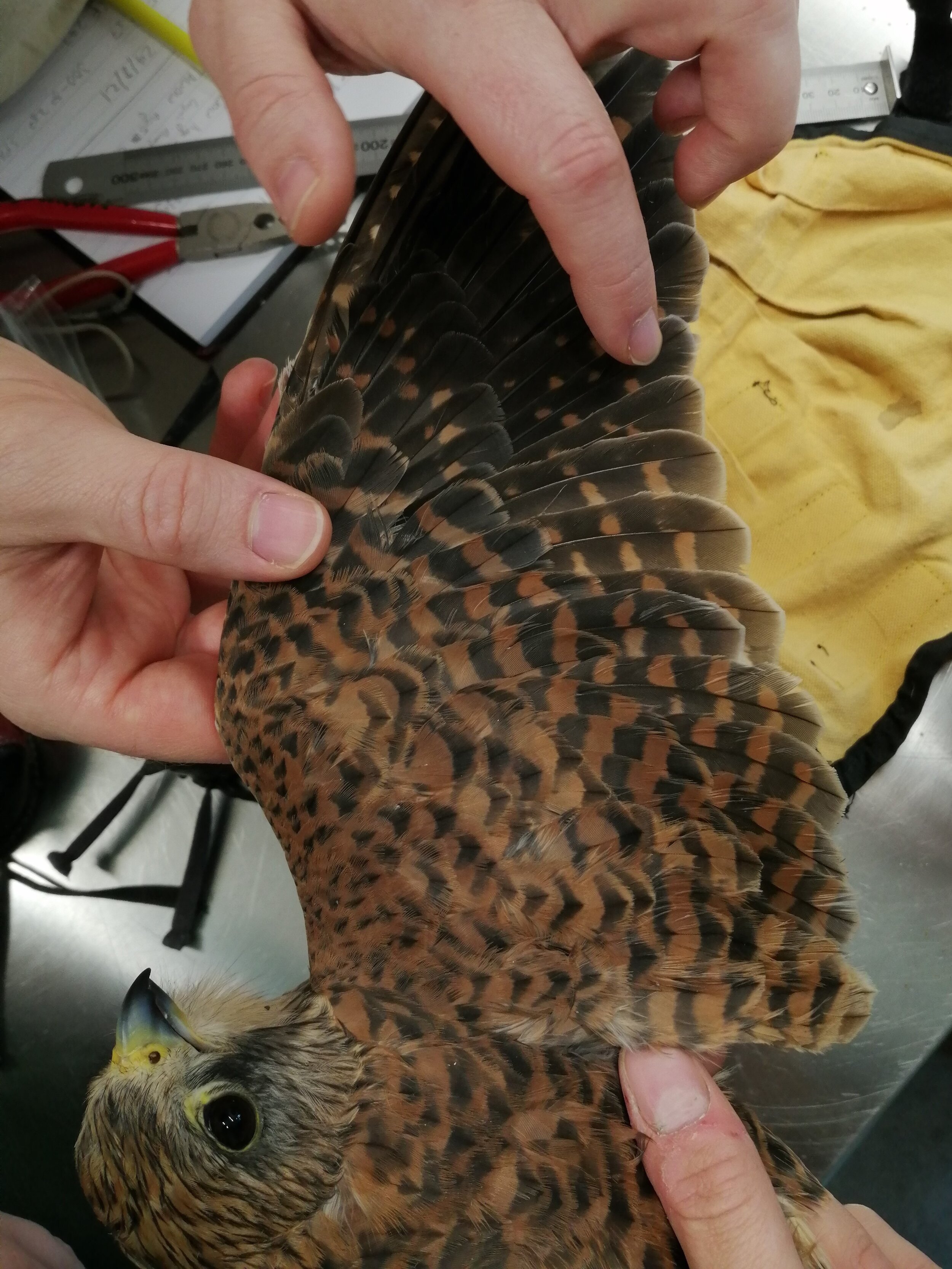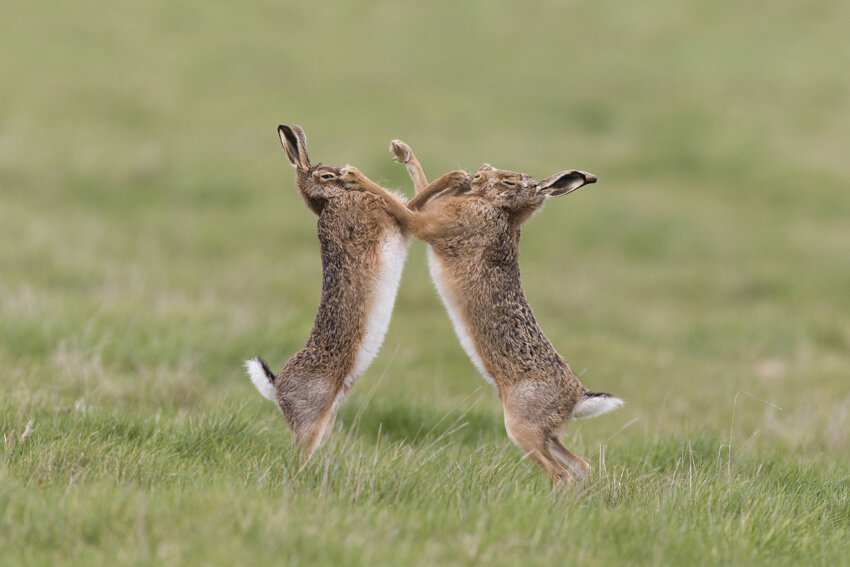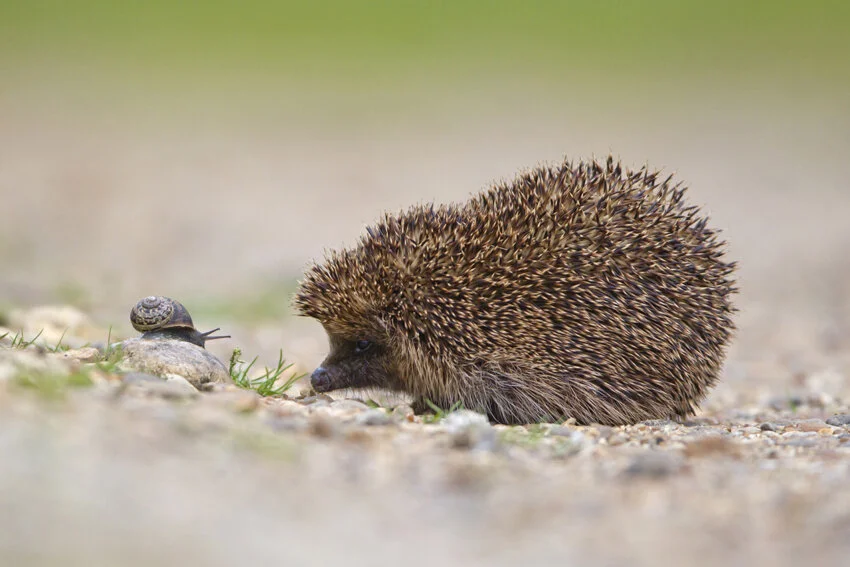Although Buzzard’s aren’t an uncommon patient for our Raptor Hospital, it is unusual to have more than one in at a time. We recently had three in our aviaries, and took the opportunity to ask Hugh to come down and do some more ringing training with Jess and Susan. In more than 20 years of ringing, Hugh has never had the opportunity to ring a Common Buzzard, so the experience was valuable to the whole team. Here are the stories for each Buzzard.
The first to arrive was an interesting case. This Buzzard was found in the middle of a field, and presented with severe blood haemorrhaging in both eyes. Although there was some orbital swelling, there was no bruising or any other signs of injury or impact. We suspect she got into an altercation with some crows. The bird spent a few days on medication to reduce the swelling, and showed signs that it was blind; not reacting to movement and doing a light-searching head movement. However, the treatment worked and after a couple of days the eyes started to clear and the behaviour became more normal for a Buzzard.
This Buzzard was checked by our specialist vet Elliot on his recent visit, who was happy with her progress. A small eye ulcer was given further medication, which has now cleared up, so we took the opportunity to ring this bird before release. Upon taking the measurements, this large bird was confirmed to be a first year female.
Bill length isn’t usually measured, but for some birds it can be helpful to determine the sex of the bird.
The second Buzzard to arrive was a young first year male who was brought to us in very poor condition. The bird was starving, which suggests it had recently been evicted from the parental territory and was inexperienced at finding food. We provided it with a varied diet to regain body condition, and it quickly put on weight again!
Enjoying a meal of quail
When this boy was caught for ringing, he earned the nickname “Heartybum” as his juvenile plumage had created lots of heart shapes on his under tail coverts. These will be replaced with adult type feathers next year.
These juvenile feathers will moult next year and be more adult type, without the heart shapes.
Not the most dignified way to get a weight, but when it first arrived, this male was only 455g, so this is a massive improvement (now weighing 600g as the jacket weighs 75g)
The third Buzzard came in after hitting the side of a van. She had swelling on her chest and head so was given pain relief to help her recovery. After a few days, she showed herself to be a fighter and we have been very happy with her progress. She was the last to be ringed and despite being quite feisty in the aviary, she was very submissive in the hand and allowed Hugh to take all the necessary measurements without the aid of a casting jacket.
Hugh measuring the third Buzzard. Callipers are used to get accurate measurements of bill length, tarsus width and hind claw length, which are all useful when trying to sex birds of prey,
Rear claw length helps determine the sex of Buzzards.
“Heartybum” was collected by his finder this week and released near where he was found. The other two Buzzards are also scheduled for release over the next few days, so if we receive any further updates from them, we will share them here.















